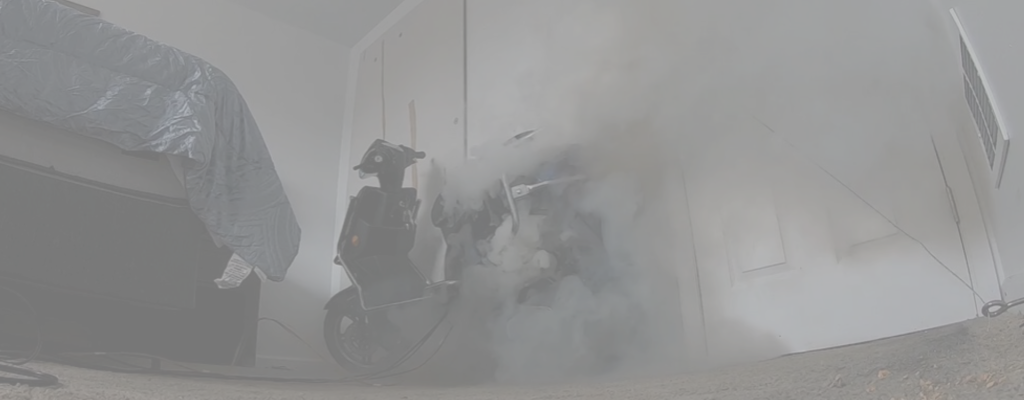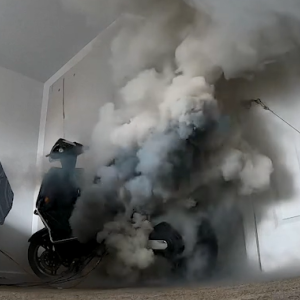
Examining the Fire Safety Hazards of Lithium-Ion Battery Powered e-Mobility Devices in Homes
- Overview
- Updates
- Resources
E-bike, e-scooter and other e-mobility devices have become common modes of transportation. These devices are often powered by lithium-ion batteries due to their favorable combination of low weight and high energy density. If these batteries fail, they have the potential to catch fire and cause explosions.
Context
To better understand these failures, the Fire Safety Research Institute (FSRI), part of UL Research Institutes has initiated a research project in partnership with the Fire Department of the City of New York (FDNY). This project studies and seeks to answer the following questions through conducting experiments in both laboratory and residential test structure settings using carefully designed and placed instrumentation:
- How does a common e-scooter battery fail when exposed to different thermal runaway initiation methods (i.e. overcharge, external heating)?
- Are there differences in battery failure behavior for thermal runaway initiated by external heating versus overcharge?
- What fire dynamics result from an e-scooter that is overcharged into thermal runaway?
- Are there differences between an e-scooter fire in a bedroom with the door closed and an e-scooter fire in a living room open to the remainder of the home?
- If occupants are in the home, what thermal and gas concentration exposure will they experience?
- Are there considerations for the public or fire service because of these experiments?


Considerations
FDNY is experiencing a concerning trend in electric mobility (e-bike, e-scooter, etc.) device fires. In 2021 alone, NYC responded to 104 fires that were initiated by lithium-ion batteries, resulting in 79 injuries and 4 deaths. Some of these fires have shown damage from pressure as seen in video on this page. Through their response to these incidents, FDNY has gained valuable insight and knowledge. This information was shared when they held a first of its kind symposium titled “Lithium-Ion Batteries: Challenges for the Fire Service” in partnership with the FDNY Foundation, FSRI and NFPA. This symposium was held September 6-7, 2022, with over 300 attendees with the intent to learn more about the hazards of lithium-ion batteries and share knowledge about operating with this evolving hazard. At the symposium, FDNY shared that the electric mobility fire trend in 2022 was increasing, with double the incidents of the previous year and 6 deaths to date.
Click here for more information about the symposium and resources from the presenters.
Following the symposium, FSRI continues to work with FDNY to better understand these fires and fill in knowledge gaps. A core need is to understand the speed at which these fires develop prior to fire department arrival and how they impact the fire dynamics and firefighter safety on the fireground.



Objectives
The goal of this project is to improve the understanding of the resulting fire dynamics from lithium-ion powered e-mobility devices and to improve safety for first responders and occupants.
For important safety tips around charging, storing, and disposing of rechargeable and lithium-ion batteries or the devices powered by them, visit FDNY.smart.org.
Research Partners
Published: November 10, 2022











